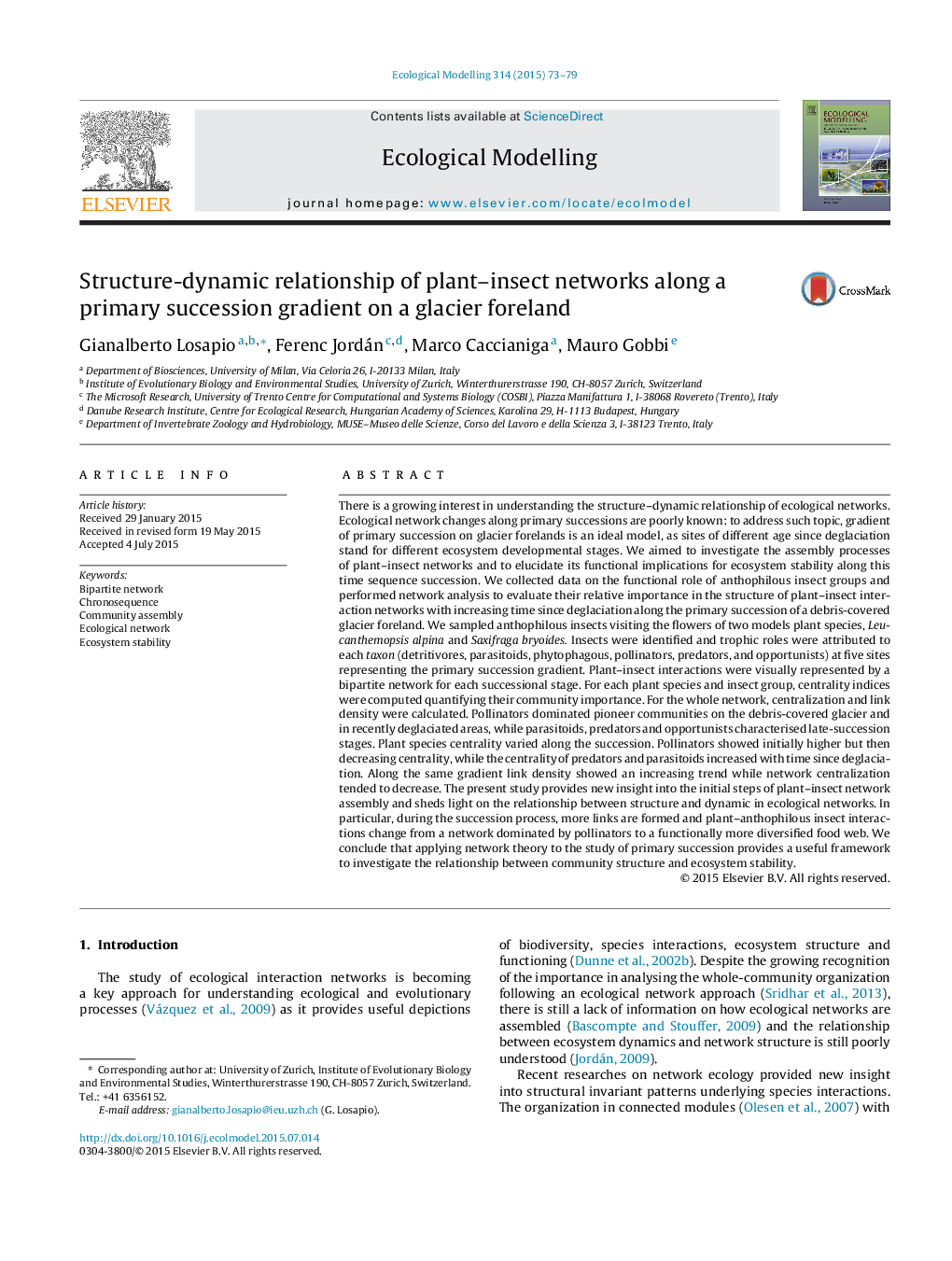| کد مقاله | کد نشریه | سال انتشار | مقاله انگلیسی | نسخه تمام متن |
|---|---|---|---|---|
| 6296500 | 1617433 | 2015 | 7 صفحه PDF | دانلود رایگان |
عنوان انگلیسی مقاله ISI
Structure-dynamic relationship of plant-insect networks along a primary succession gradient on a glacier foreland
ترجمه فارسی عنوان
ساختار-پویا ارتباط شبکه های حشرات در امتداد یک شیب اولیه در یک جنگل یخچال
دانلود مقاله + سفارش ترجمه
دانلود مقاله ISI انگلیسی
رایگان برای ایرانیان
کلمات کلیدی
موضوعات مرتبط
علوم زیستی و بیوفناوری
علوم کشاورزی و بیولوژیک
بوم شناسی، تکامل، رفتار و سامانه شناسی
چکیده انگلیسی
There is a growing interest in understanding the structure-dynamic relationship of ecological networks. Ecological network changes along primary successions are poorly known: to address such topic, gradient of primary succession on glacier forelands is an ideal model, as sites of different age since deglaciation stand for different ecosystem developmental stages. We aimed to investigate the assembly processes of plant-insect networks and to elucidate its functional implications for ecosystem stability along this time sequence succession. We collected data on the functional role of anthophilous insect groups and performed network analysis to evaluate their relative importance in the structure of plant-insect interaction networks with increasing time since deglaciation along the primary succession of a debris-covered glacier foreland. We sampled anthophilous insects visiting the flowers of two models plant species, Leucanthemopsis alpina and Saxifraga bryoides. Insects were identified and trophic roles were attributed to each taxon (detritivores, parasitoids, phytophagous, pollinators, predators, and opportunists) at five sites representing the primary succession gradient. Plant-insect interactions were visually represented by a bipartite network for each successional stage. For each plant species and insect group, centrality indices were computed quantifying their community importance. For the whole network, centralization and link density were calculated. Pollinators dominated pioneer communities on the debris-covered glacier and in recently deglaciated areas, while parasitoids, predators and opportunists characterised late-succession stages. Plant species centrality varied along the succession. Pollinators showed initially higher but then decreasing centrality, while the centrality of predators and parasitoids increased with time since deglaciation. Along the same gradient link density showed an increasing trend while network centralization tended to decrease. The present study provides new insight into the initial steps of plant-insect network assembly and sheds light on the relationship between structure and dynamic in ecological networks. In particular, during the succession process, more links are formed and plant-anthophilous insect interactions change from a network dominated by pollinators to a functionally more diversified food web. We conclude that applying network theory to the study of primary succession provides a useful framework to investigate the relationship between community structure and ecosystem stability.
ناشر
Database: Elsevier - ScienceDirect (ساینس دایرکت)
Journal: Ecological Modelling - Volume 314, 24 October 2015, Pages 73-79
Journal: Ecological Modelling - Volume 314, 24 October 2015, Pages 73-79
نویسندگان
Gianalberto Losapio, Ferenc Jordán, Marco Caccianiga, Mauro Gobbi,
